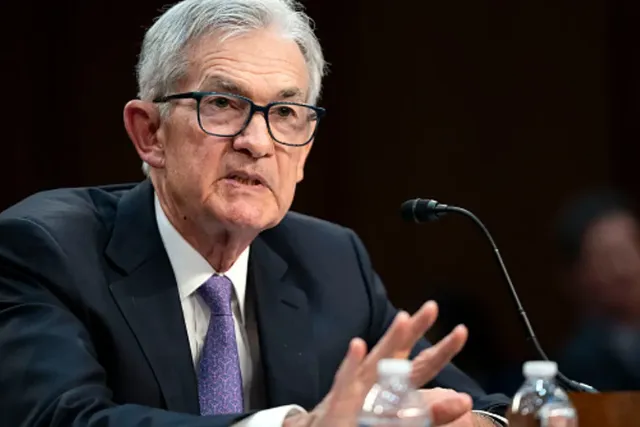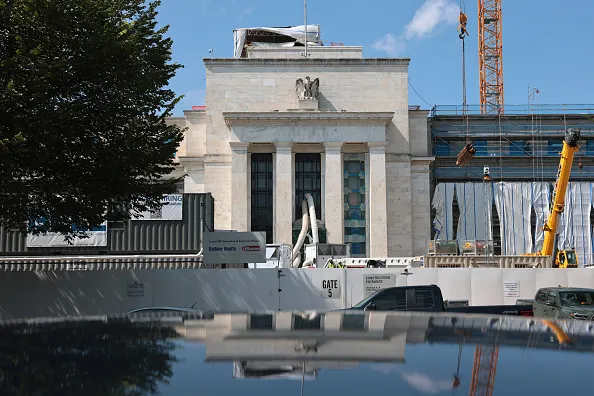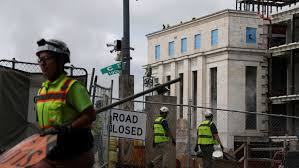
Trump administration officials are intensifying scrutiny of a ballooning renovation budget at the Federal Reserve’s Washington, D.C., headquarters, a move that some observers say is aimed at forcing Fed Chair Jerome Powell to step aside before his term expires in 2026, the Wall Street Journal reports.

What started as a $1.9 billion renovation for the Fed’s three-building complex has grown by nearly 35% to around $2.6 billion due to a mix of unexpected construction challenges, design changes, and pandemic-era cost surges, the Journal said.
Among the biggest drivers: a switch from an above-ground tower to costly underground offices after the U.S. Commission of Fine Arts objected to the original five-story design. Construction crews also uncovered hidden asbestos, toxic soil and water table issues that drove up the tab, while pandemic-era inflation sent steel, cement and wood prices soaring beyond typical escalation rates, budget documents show.
Despite such overruns being common in large government renovation projects, the Trump administration has zeroed in on the expense as a point of political leverage. White House budget director Russ Vought publicly blasted the cost overrun in a recent social media post, calling it more than double the cost of restoring a historic federal building, at $1,923 per square foot. Vought also posted a letter he sent Powell, questioning whether the Fed chief misled lawmakers during testimony about the project’s scope.
Powell fired back, insisting that the National Capital Planning Commission “had no financial oversight” of the Fed’s project, so the central bank wasn’t obligated to notify it of design revisions. A Fed official told the Journal the agency’s outside building manager never indicated that the changes needed new approval.
At the center of the administration’s push is whether the renovation’s perceived “design excesses” can be used to weaken Powell’s standing. White House Deputy Chief of Staff Michael James Blair stoked the flames by mocking the project online, comparing Powell to Marie Antoinette for the “Taj Mahal near the National Mall.” “Let them eat basis points,” Blair wrote in mid-July, referencing interest rates the Fed has kept elevated despite Trump’s calls for cuts.

“At a time when the Fed is running an operating deficit, maintains high interest rates, and is receiving significant public scrutiny, one has to wonder whether the so-called ‘Taj Mahal near the National Mall’ project is in the best interests of the board & the public it serves,” Blair added in another post.
Behind the scenes, academics say the attacks are not just about cost control. “We are in a high-stakes moment in the history of the Federal Reserve,” said Peter Conti-Brown, a scholar at the University of Pennsylvania. “It seems clear to me that the Trump administration, using various mechanisms, [has] now cooked up a post-hoc explanation for Powell’s removal.”
Historical parallels add fuel to the speculation. The Journal pointed to President Richard Nixon’s effort in the early 1970s to manipulate his Fed chair, Arthur Burns, by planting negative press stories to push him into holding interest rates low before the election.
Yet legal and political roadblocks remain. In a ruling this spring, the Supreme Court reaffirmed that a president can only fire the Fed chair “for cause” — misconduct or dereliction of duty — not just for policy disagreements. Trump himself has acknowledged this limit, telling allies he’s unlikely to formally remove Powell despite deep frustration with the Fed’s high-rate policy.
Lawmakers from both parties have also warned that firing Powell outright could rattle markets. “The consequences of firing a Fed chair … will be to undermine the credibility of the United States going forward,” Sen. Thom Tillis (R-N.C.) said on the Senate floor earlier this month. “If it happens, you are going to see a pretty immediate response, and we’ve got to avoid that.”
For now, Trump officials appear to be applying steady public pressure instead. Whether that push — focused on spiraling renovation costs — succeeds in making Powell’s role untenable remains to be seen. But critics say the strategy is a risky echo of past attempts to politicize the central bank’s independence.
Originally reported by Robert Freedman in Construction Dive.